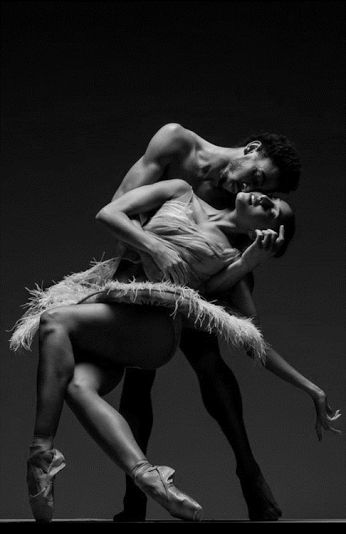I went to a super arty and hippy college with a dance department to match. I was not as outwardly crafty as my classmates were and it was intimidating at first. Some of my counterparts reveled in creating completely uncommunicative art that surely felt luxurious to make but not so much to watch. The audience would nod and murmur in agreement over how intellectual it was out of fear of being the only person who didn’t quite get it. I spent my college years pretending how intellectual I was by hiding what I actually thought.
Art that cannot be understood is not higher art, it’s just unsuccessful. Good art communicates something, to anyone and everyone. What your audience emotionally takes away from it is none of your business, but that’s the beauty of it. Their life experiences will mingle with the emotional ride that you take them on. I love hearing feedback because it surprises me every time. Someone may be exhilarated after watching, where another might be sad. These are all good things, just don’t try to be so smart that no one get’s anything.
Just start for heaven’s sake
Getting started is often the hardest part. Try some ideas out and film yourself. You can trash whatever you come up with if you hate it. If you get stuck in your head and never even set the first move, the procrastination will never end.
Pick music that you Love
We don’t always get to choose our music depending on what the show or gig is, but if you can choose what you love, it really helps. Remember, you’ll be listening to this song A LOT.
Make sure your Song has an Arc
When music has a rich arc it has texture and a sense of push and pull. It may include a compelling intro, poetic rises and falls, rhythmic interludes and an emotional climax. These peaks and valleys throughout will give you opportunities to create visual dynamics. Without a strong arc, the hard work lands on you to create texture in the piece because the lack of audible dynamics.
Let it Guide you
If you’re totally lost on where to start, let the music be your director. If there are strong accents, use them. If its got a soft and flowing quality, pick movement that feels like it floats. At the minimum, the song will tell you what you can’t do. An extreme example of what you can’t or shouldn’t do is be sensual and thrashy to Twinkle Twinkle Little Star. It may seem like an obvious statement, but it’s worth saying. Let your music guide you and if you make a strong choice to do the opposite of your song, know that you are going against it and why. Be aware of your choreographic choices. You may be making art that doesn’t reflect your intention.
Use Diverse Elements
If you’re stuck in the creative process, it helps to make a list of the foundational elements you have already used and try to add things that have a different base wrap. Say you’ve started with straddle climbs and a double footlock series. You’d like to end with a wheel down but you are drawing a blank on how to connect the dots. Instead of more straddles and splits, maybe add a salto, a spinning hip key or an angel drop (inverted double crochet preparation). The shapes are diverse from each other and this strategy will help you narrow down your ‘maybe’ list and eliminate tricks that are too similar.
Show Your Audience what you want them to See
Transitions are everything. They are the glue that brings everything together. When you spend just as much time wrapping foot locks as you do in your split, you’re asking the audience to patiently wait while you transition and in the process, bore them to tears. Show them what you want them to see by using TIMING – speed and syncopation. If the split is the main event, show the audience your split not the struggle bus you were on to get there. Time your transitions to the music or execute the wraps cleanly and quickly.
Less is More
Lean in to simplicity rather than trying to fit everything and the kitchen sink into a three minute act. Over choreographing is counter-productive. Your audience needs a handful of seconds to register what you are trying to do. Do less and say more.
I consider myself successful with choreography if I can answer YES to the following questions. Did my audience experience an emotional reaction? Did the performers in my piece naturally take ownership of the choreography and embody the movement? Did I do the most I could with the elements I had at my disposal – performers, music, space, lighting, etc? How much did the limitations that I had to work with negatively effect what I was trying communicate?
If you feel limited by the constraints that most always present themselves – inadequate height, space, technology, skill level of yourself or your performers, etc, rest assured, most productions except the top 1% have financial and human limitations. Part of developing the skill set to create successful choreography is learning how to make lemonade out of lemons.
Finally, do you like what you’ve created and why? When it’s just not working for you, it’s time for more brainstorming. If you’re struggling to hit the nail on the head, workshop and modify. Switch out one thing for another until you have a sharper focus on the thought, emotion or story you’re trying to get across. If you don’t trust your instincts yet, test your work by showing people you trust and ask for constructive criticism. They do not have to know a thing about aerial to be helpful. If a lay person cannot get something out of it, you aren’t doing your job.
We were newbies in college experimenting with movement that we liked, but creating cool moves and tricks is only a fraction of what makes choreography successful. Most of our projects were created without really listening to the music or thinking about what our audience would take away. If I could travel back in time to my college choreography class with what I know now, I would approach it from the opposite direction. Begin with what I want them to get out of it and go backwards from there. When you let the music tell you what to do, show the audience what you want them to see, utilize movement diversity and lean into simplicity, you can shape your audience’s experience.

